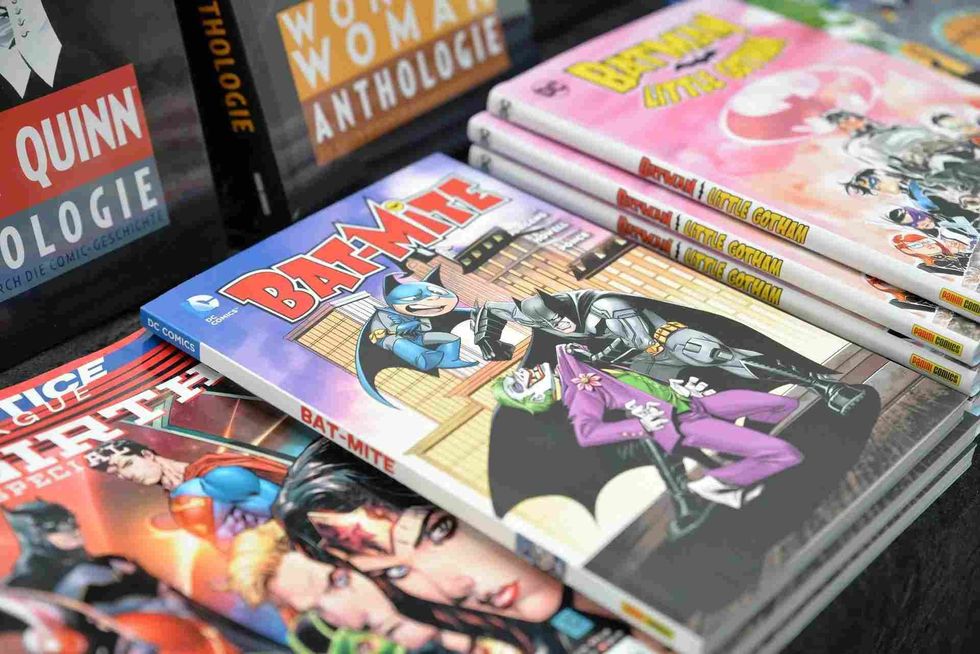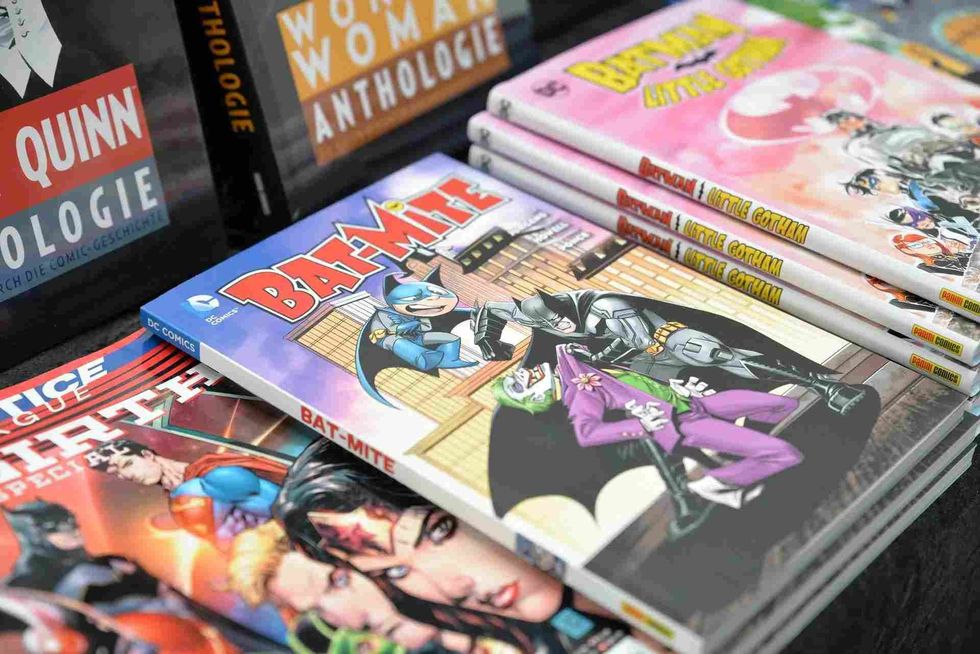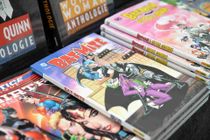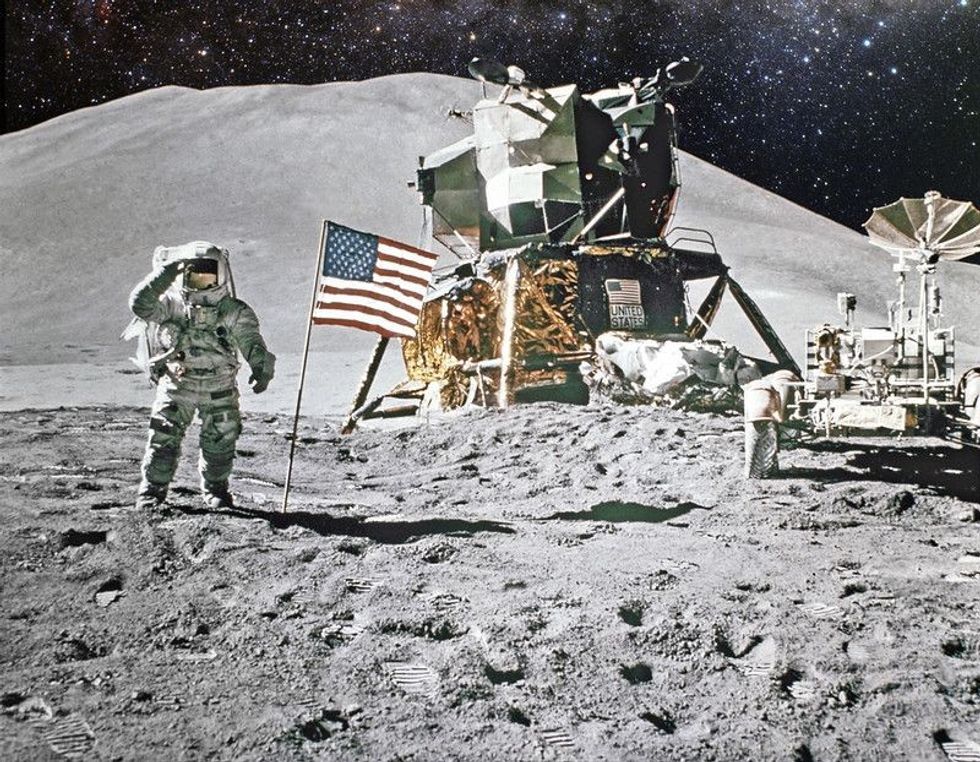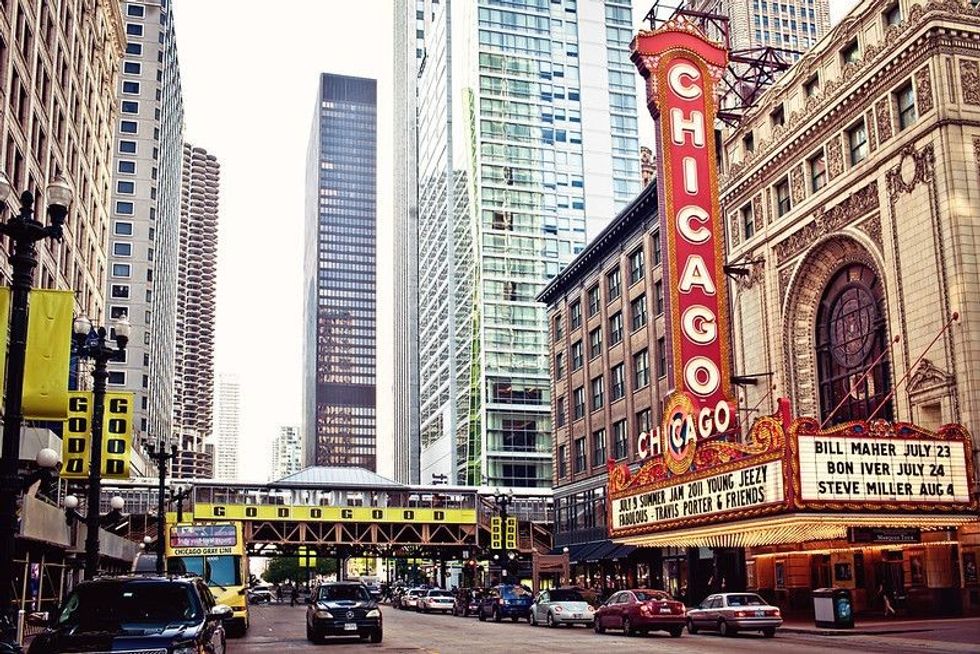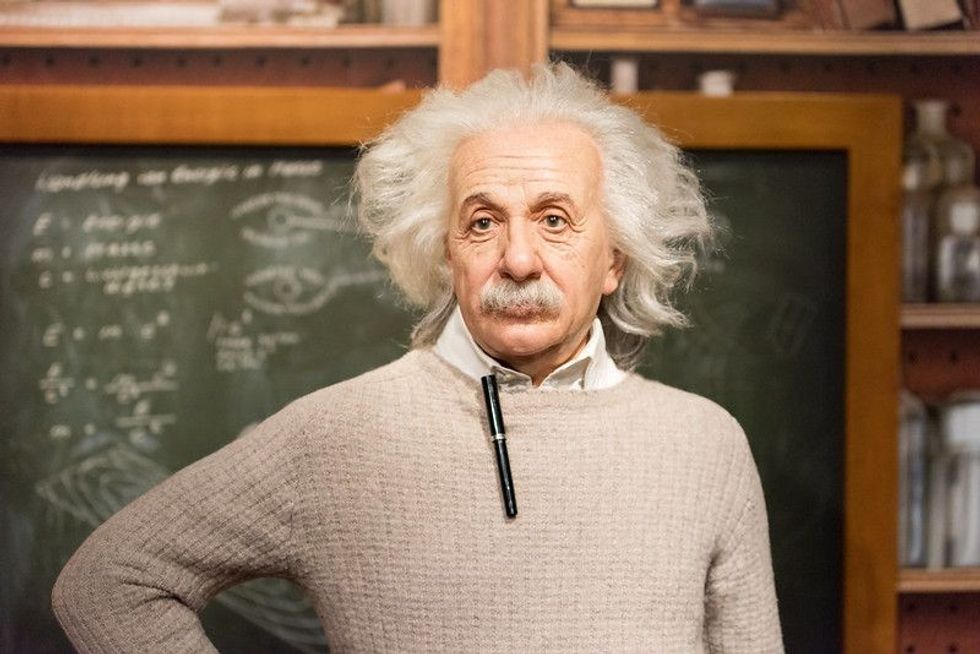1939 Facts: Learn About What Happened The Year World War 2 Started

1939 was a year of destiny that was lived in the shadows of war.
Imagine yourself being transported back in time, and you find yourself walking on the streets of New York. Suddenly you hear the newspaper boy shouting at the top of his voice!
You go ahead and buy a newspaper. What would you see on the front page?
We can bet you would have found news about the tension building up in Europe. This would eventually lead to World War II fought between the German troops of the Nazi regime, the Japanese forces, the Fascist Italian forces against the forces of Great Britain, the Soviet Union, and later, the United States.
Every day there was talk of the impending Second World War in Europe and elsewhere. There was no part left in the world at that time which did not feel the threat of destruction. The memory of the First World War or the 'Great War' was still fresh in the minds of the people.
Even as the stakeholders of peace in Europe were struggling to control an ever belligerent Germany, Spain was nearing the end of its tragic upheaval. By the end of 1939, Barcelona had fallen as the victorious troops of General Francisco Franco marched into Madrid after two and a half years of civil strife.
The fascist regime of Franco had the full support of Adolf Hitler and his government. Germans supplied arms and ammunition to the general's cause throughout the Spanish Civil War. The civil war in Spain has been referred to as the 'dress rehearsal' before the real war began. The real war was World War II itself.
In hindsight, the '30s were not a particularly good time to live an easy life with a lot of things happening between the First and the Second World Wars!
If you are interested in knowing more fun facts, then you should check out 1954 facts and 1910 facts!
Cost Of Living 1939
The end of the '30s was hard for the common people in most countries around the world. The world economy was still grappling and coming to terms with the after-effects of the Great Depression.
A concerned US President Franklin Delano Roosevelt thought it fit to shift the Thanksgiving of 1939 to an earlier date to increase retail purchases across America. He was doing all he could to make the economy bounce back.
Roosevelt is the only US President to date to be elected for a record four times. No other US President has had the chance to win the Presidency more than twice.
That was the extent of his political acumen and popularity amongst the masses. He became President when his country was in dire straits. Through his visionary efforts, he managed to pull the US out of the toughest period of its modern existence.
Although America was not actively a part of the politics that was being played in Europe, it seized the opportunity of a possible war very astutely. On Roosevelt's orders, industries across the US started producing war armaments on a very large scale during the late '30s till the early '40s.
As a result of this mass production of war materials, countries like Britain and France transformed into big buyers of American-made war products. This boosted the US economy enormously. Wage-earners would get around 30 cents for one hour of work in 1939.
Things were starting to look better for American people by the late '30s. No wonder movie theaters were charging a jaw-dropping 23 dollars per ticket for 'Gone With The Wind' when it premiered in Atlanta, Georgia!
If you compare these numbers and prices with the average household income of a typical American family at the time, which stood at around $1300 per month, the ticket price sure looks humongous!
What we find interesting is that affording a house and a car was much easier back in 1939 than it is now. House prices these days are excruciatingly high. But back in 1939, a respectable house would have come for $4000.
Even cars were not as expensive as they have become today. With about $750, an average American could purchase a car in 1939. A new car in the US costs almost a million dollars these days! Similarly, in Australia, $100 in 1939 is equivalent to around $4,500!
Major World Political Leaders
This was a critical time to be in power. A multitude of characters was running the show in Europe and elsewhere.
But the spotlight was always on the German dictator Adolf Hitler. His every move was seen to be signaling towards the fate of Europe. A year before, in 1938, Time Magazine had him on its cover as Man of the Year.
His meteoric rise to power had become somewhat similar to a myth. If you want to see and hear Hitler speak at rallies in the '30s, look for old videos which are available on the internet. He was a powerful orator and had the charisma to leave spectators spellbound.
The next trivia, which we are going to tell you, will most likely make your eyes go wide in disbelief: Hitler was one of the nominees for the Nobel Peace Prize in 1939!
Leading his Nazi government with an iron hand, Hitler bullied his way to acquiring parts of Germany that were taken away from it after the Treaty of Versailles came into effect in 1919.
Chamberlain was the leader of the delegation that met Hitler and his chief ally, the Italian premier Benito Mussolini, in Munich in September 1938 to discuss peace terms.
Everyone makes mistakes. So did Mr. Chamberlain in getting himself tricked by Hitler's promises of peace. Chamberlain's policy of appeasement could only stop the inevitable for a while longer because Hitler would stop at nothing.
You may have read before that Britain has a Queen. So you may be wondering why the Prime Minister is doing all the work?
Well, the monarchy in Britain does not hold any real power. The British Crown is a powerful symbol that has stood the sands of time.
In the United Kingdom, the real power resides in the hands of the Prime Minister and his/her team of ministers, which forms the cabinet. So in 1939, while King George VI was seated on the throne, Prime Minister Neville Chamberlain had the real task of running the British government.
We cannot end our discussion without including Franklin D Roosevelt and Joseph Stalin in the list of names. Both men were undisputed leaders of their respective countries.
Yet, there was a big difference in what they represented. While Roosevelt was the elected President of the United States, Stalin ruled the USSR (Union of Societ Socialist Republics) by force and force alone.
Soviet Russia was another dictator state like Germany. Only its guiding principles were different than that of Germany.
Whereas Joseph Stalin has been accused by historians and observers alike as being a merciless dictator who killed millions in his country, Roosevelt's track record says something completely different.
It is mainly because of the strong leadership skills and foresight of President Roosevelt that America was able to come out of the economic debacle of the late '20s and early '30s.
That phenomenon is called the 'Great Depression', and you should certainly do some research about it. Did you know that the disastrous effects of World War I on Germany were one of the primary reasons for Hitler's rise to power?
Popular Culture
We are going to talk about some pop culture history at this juncture. By pop culture history, we mean to say all that was happening in various walks of life in human society like the arts, cinema, sports, medicine, and science.
In New York City, 1939 saw the opening of the World's Fair. Many exhibits were in place at this carnival. Did you know that the show 'Futurama' had been named after such an exhibit?
Not far from this place, the New York Yankees became the baseball World Series Champions.
Movies were and are an essential part of pop culture history. Going to the movie theaters was one of the national pastimes of the American people in 1939.
All-time classics such as 'Gone With the Wind', 'Mister Smith Goes to Washington', 'Stagecoach' and 'The Wizard of Oz' were ruling the charts in the cinema halls. Hattie Mcdaniel took a slice of history for herself when she won the Oscar award for best-supporting actress in the 1939 ceremony.
It cemented her position in movie history as the first African-American actor to achieve such a feat.
Have you heard of the country Peru? It is located in South America and is known widely to be the land of the Incas. You can learn more about the Incas in your free time. In Peru, medical history was made when in 1939, a 5-year old girl named Lina Medina gave birth to an infant!
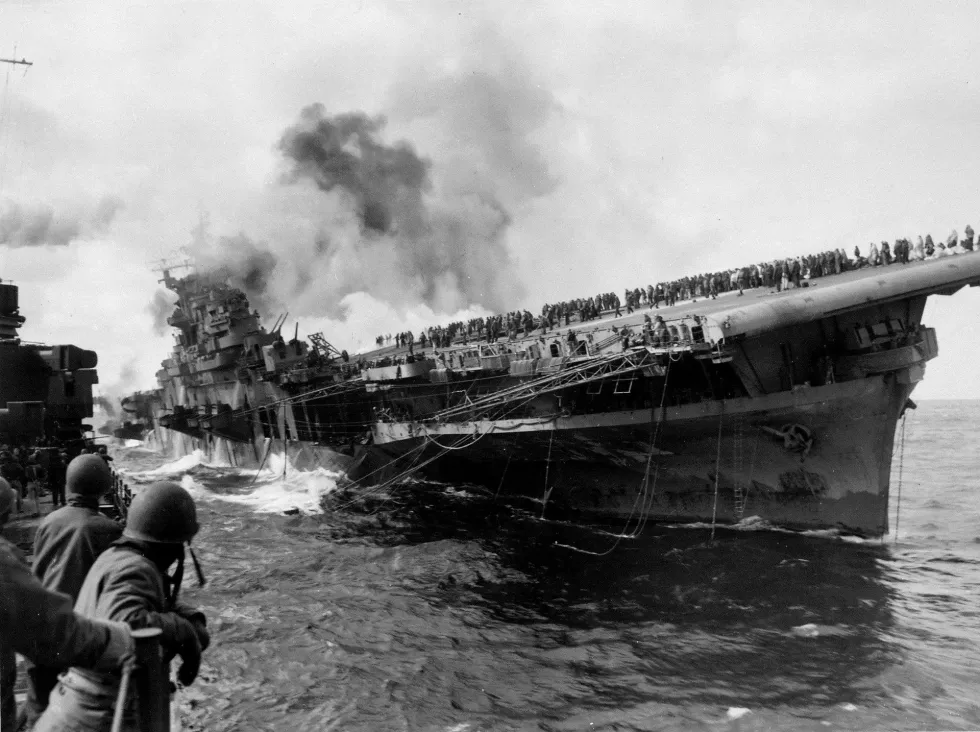
World War II
How the conflict began is printed in documents for all time. Remember the Munich Peace Agreement of September 1938?
Hitler tore up his Munich pledges in March 1939 and occupied the whole of Czechoslovakia. Then he abandoned all his cynical pretenses and exposed himself in all his duplicity.
Ceaselessly violating the terms that were agreed upon at the Munich conference, Hitler directed his military leaders to prepare for war. As the sirens of the mega conflict began to blaze all across Europe, Nazi Germany shamelessly began annexing country after country.
Once they reached the shores of northern France, they eyed their longtime foe Britain. By this time, Chamberlain had resigned and was replaced by the Winston Churchill.
The new British Prime Minister gave some bold and memorable speeches during this grave hour to motivate his countrymen.
In the endeavor to resist an invasion from Germany, the Royal Air Force played a significant role in neutralizing the threat coming from the air. The dog fights between the pilots of the Royal Air Force and the Luftwaffe of Germany are a thing of legend.
On a different continent the other side of the Atlantic Ocean, a worried President Roosevelt summoned the best theoretical physicists of the country, including Albert Einstein, and paid heed to their advice.
This was when the idea of the atomic bomb was born. The US government had intelligence reports that scientists in Nazi Germany were also working on a similar project. Thus began the race to produce the first nuclear weapon.'Project Manhattan' was the name that was given to this mission.
Invasion Of Poland
Malpractices are common in warfare. Take the case of Nazi Germany. Once they were garrisoned near the Polish border in August 1939, they were devising plans to find an excuse to annex Polish territories. What they did was sinister.
The military high command of Nazi Germany plotted to stage a false attack on a German radio station. Then they abducted and killed a Polish farmer named Franz Honiok and then placed him at the site of the attack. When news broke out, German authorities pointed fingers at the Polish for this heinous act of crime.
Much before this event took place, German forces were already scheming with their counterparts in the Soviet Union to chalk out a strategy to invade Poland.
Representatives of Nazi Germany had secretly signed a non-aggression pact with the Soviet Union on the eve of their assault on Poland.
When the German military was assured of non-interference from the Soviet Union, they went ahead with their plans on invading Poland.
It all started at dawn on the fateful day of September 1. The Nazi war machine was unleashed upon an ill-prepared Poland. What made this advance deadly and hugely effective was the fact that the Germans utilized swift tactics to their advantage.
The German 'blitzkrieg', as it is known commonly, combined fast ground movement of troops accompanied with aerial support from the German Air Force.
It was not long before Poland surrendered before the relentless German forces. As soon as news broke of the German attack on Poland, Great Britain and France declared war on Germany. This took place two days later, on September 3.
The Soviet Army was engaged in their pursuits at the same time. As per their pact with Germany, eastern Poland went to Germany, while the Soviets took control of western Poland.
Simultaneously, they engaged militarily with Finland over claims of territory. After protracted fighting, the Finnish government allowed the Soviets to take away large parts of their land. We know this segment of World War II as the Winter War.
To the echo of the marching feet, the world passed into the '40s and a new decade. You can imagine a time when countries all over the globe were busy mobilizing their troops for the supreme trial and cause, all for the achievement of liberty and the defeat of aggression.
In both the World Wars, millions of soldiers fought and laid down their lives!
Here at Kidadl, we have carefully created lots of interesting family-friendly facts for everyone to enjoy! If you liked our suggestions for 1939 facts then why not take a look at 1956 fun facts, or 1922 facts!
We Want Your Photos!
More for You
Bachelor of Arts specializing in English, Master of Arts specializing in English

Rajnandini RoychoudhuryBachelor of Arts specializing in English, Master of Arts specializing in English
With a Master of Arts in English, Rajnandini has pursued her passion for the arts and has become an experienced content writer. She has worked with companies such as Writer's Zone and has had her writing skills recognized by publications such as The Telegraph. Rajnandini is also trilingual and enjoys various hobbies such as music, movies, travel, philanthropy, writing her blog, and reading classic British literature.
Bachelor of Arts specializing in English Literature

Nishtha DixitBachelor of Arts specializing in English Literature
Nishtha is an experienced SEO writer and editor, with a passion for writing and self-expression. She is currently pursuing an undergraduate major in Literature and Communication and a minor in Political Science from the University of Delhi. Nishtha has completed a certificate master course in English from the British Council and has been appointed as the editor for the bi-monthly magazine of the University of Delhi.
Disclaimer
1) Kidadl is independent and to make our service free to you the reader we are supported by advertising. We hope you love our recommendations for products and services! What we suggest is selected independently by the Kidadl team. If you purchase using the Buy Now button we may earn a small commission. This does not influence our choices. Prices are correct and items are available at the time the article was published but we cannot guarantee that on the time of reading. Please note that Kidadl is a participant in the Amazon Services LLC Associates Program, an affiliate advertising program designed to provide a means for sites to earn advertising fees by advertising and linking to Amazon. We also link to other websites, but are not responsible for their content.
2) At Kidadl, we strive to recommend the very best activities and events. We will always aim to give you accurate information at the date of publication - however, information does change, so it’s important you do your own research, double-check and make the decision that is right for your family. We recognise that not all activities and ideas are appropriate for all children and families or in all circumstances. Our recommended activities are based on age but these are a guide. We recommend that these ideas are used as inspiration, that ideas are undertaken with appropriate adult supervision, and that each adult uses their own discretion and knowledge of their children to consider the safety and suitability. Kidadl cannot accept liability for the execution of these ideas, and parental supervision is advised at all times, as safety is paramount. Anyone using the information provided by Kidadl does so at their own risk and we can not accept liability if things go wrong.
3) Because we are an educational resource, we have quotes and facts about a range of historical and modern figures. We do not endorse the actions of or rhetoric of all the people included in these collections, but we think they are important for growing minds to learn about under the guidance of parents or guardians.
